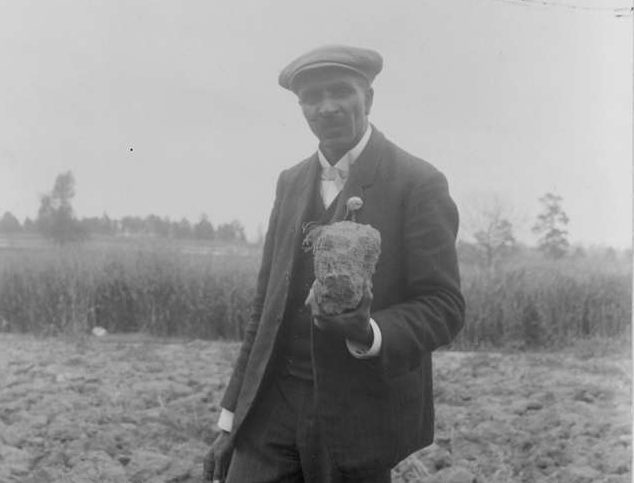By Kip Le Warn, Engagement Coordinator, Coalition for the Delaware River Watershed
To celebrate Black History Month this February, take some time to learn about historical figures and groups in the environmental movement that are too often overlooked.

George Washington Carver: In 1894, Carver became the first African American to earn a Bachelors of Science Degree, after attending the Iowa State Agricultural School. He went on to earn his Masters of Agriculture and began working at the Tuskegee Institute to establish an agricultural school. His early academic concentration was on fungal infections of soybean plants, and at Tuskegee he continued his work with plant diseases while also researching agricultural practices to help poor southern farmers.
While working on soil chemistry, Carver discovered that growing nitrogen-fixing plants like peanuts and sweet potatoes could revitalize soil that had its nutrients depleted from cotton farming, leading to higher yields of cotton after crop rotation. This practice created a surplus of nitrogen fixing plants and led to Carver working to identify alternative uses for these crops, leading to his association with peanuts. To read more about George Washington Carver, click here.

Charles Young: Young attended the United States Military Academy and was the third African American to graduate from West Point when earning his degree in 1889. He went on to become the captain of the 9th Calvary in 1901, the first black officer in the regular army to receive such a rank. The 9th Calvary, along with the 10th Calvary and the 24th and 25th Infantries, is more commonly known as the Buffalo Soldiers, all black regiments on the western frontier.
Buffalo Soldiers were instrumental in forcing Indigenous peoples off their lands, while also becoming stewards of the land themselves. They were tasked with becoming Park Rangers for the newly created National Parks, working at Yosemite, Sequoia, and General Grant National Parks. They worked to keep the parks free from poachers, ranchers, and put out forest fires. Many of the troops were led by white officers, but Charles Young captained Troop L of the 9th Cavalry. His troop built was the first to build wagon roads into the Giant Forest of Sequoia. In 1903, Young was named the acting superintended of Sequoia National Park and used his influence to make suggestions to the Secretary of Interior on preserving vegetation and inhibiting erosion. To learn more about Charles Young click here, and for the Buffalo Soldiers click here.

Nat Love: At the age of 15, Love won a horse in a raffle which he then sold off to have the funds to travel from his home state of Tennessee out west. Following the emancipation, many formerly enslaved men became cowboys, leaning on the cattle tending skills they had developed while enslaved. Demand for cowboys grew quickly when southern ranchers began to sell their cattle to northern states, where beef was more valuable. Historians estimate that 1 in 4 cowboys were black at the time.
While black cowboy often faced discrimination in the towns they passed through, their crews provided respect and unity surrounding the difficult job. In his biography published in 1907, Love wrote, “A braver, truer set of men never lived than these wild sons of the plains whose home was in the saddle and their couch, mother earth, with the sky for a covering… They were always ready to share their blanket and their last ration with a less fortunate fellow companion and always assisted each other in the many trying situations that were continually coming up in a cowboy’s life.” To learn more about Nat Love and Black Cowboys, click here.









